
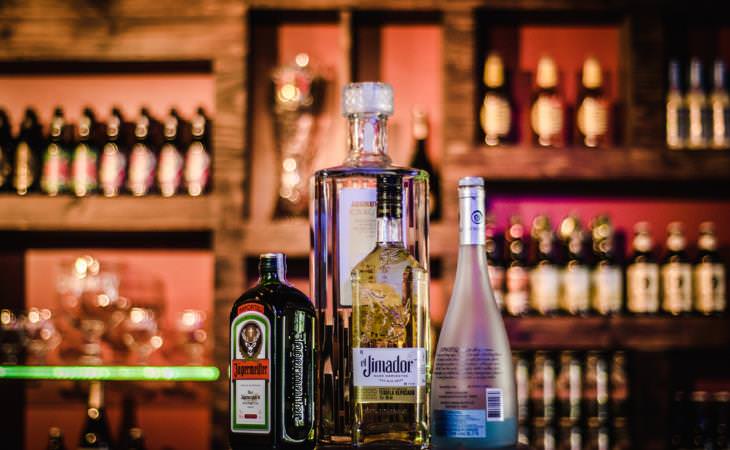

Citrusy and bittersweet drinks, which go under the umbrella term "amaro" or digestif, go well with creamy desserts like tiramisu and panna cotta, and they can also go over a ball of ice cream like you would in an Affogato. They will also pair well with milk chocolate, almond, and hazelnut, or the following fruits: strawberries, grapes, cherries, and figs.
If this sounds to you like spending time in a chemistry lab, here's a mistake-proof, 5-minute hack that will help you decide which liquors you like: add 1 tsp of your selected liquor to a cup of whipped cream. Season it with a few pinches of sugar and a sprinkle of salt. This goes over a piece of chocolate cake or ice cream.
Another mistake-proof pairing is almond or coffee liquors with any chocolate dessert.
There's room for unique liquors as well: the rule of thumb is to pair similar tastes. If it's a Limoncello, tune into that lemony citrusy hues and pair it in a citrusy dessert of any kind. A cherry liquor will go into cherry pie and so on. If you're using a spicy liquor it can complement the pumpkin spice in your pies. Bottoms up!
H/T: Epicurious

14 Dreamy Dessert Articles for Every Taste and Preference
There’s always room for dessert, and the more options, the better. This comprehensive collection of articles has dozens of dessert ideas
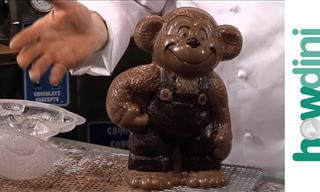 6:15
6:15
How to Make Your Own Hollow Chocolate Figures!
Don't you just love all those chocolate figures you get during the holidays? But what if you wanted to make your own?

Get Your Protein From Your Dessert
Here are two recipes for protein-rich cookies. Spoiler: they're super tasty!

Why You Should Avoid Maraschino Cherries
Maraschino cherries are the bright red ones on top of your sundae. Is there an alternative to that waxy stuff? Was that ever real cherry at all?

No Oven? No Worries! Three Easy No-Bake Dessert Recipes
Baking is an exact science where everything could go sideways because of a single inaccuracy. Luckily, these desserts require no baking.

14 Exceptionally Beautiful Home Baked Cakes and Cookies
If you love desserts and value creativity, you'll love this collection of magnificently decorated cakes, pies, and cookies!
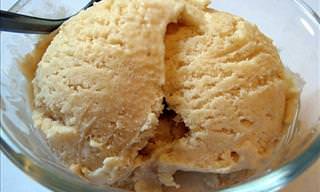
9 Ice Cream Recipes You Can Make with a Food Processor
9 easy, healthier ice cream recipes that you can prepare in a food processor.

15 Peculiar Food Combinations That People Actually Love
Take a look at these weird food combinations that sound gross but are actually quite delicious.
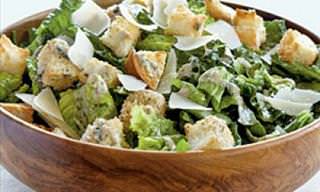
9 Great Dressing Ideas to Freshen Up Your Salad
Hungry for some juicy salad dressing ideas to spice up your salad? These simple and healthy recipes are just what you need for inspiration!

A COLLECTION of Recipes for 12 Delicious Fish Dishes
Humans have been cooking fish for thousands of years, and some countries completely depended on fish for food. We've collected our very best fish recipes here for you to enjoy.

Trying to Cut Meat from Your Life? Try These Substitutes!
Vegetable and plant-based meat substitutes that are juicy, savory and rich in proteins and vitamins.

GUIDE: Which Pasta Shape Works Best with Which Sauce?
Pasta shapes aren't just a matter of aesthetics, as different shapes lend themselves to different sauces. Here's what you need to know.
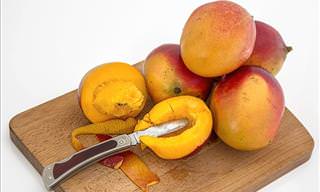 0:48
0:48
There is a Secret Way to Perfectly Cut a Mango...
Enjoying this tasty summer fruit has never been easier!
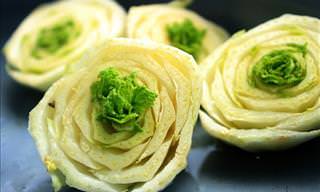
Re-Grow These 10 Vegetables - Just Use Water!
It's amazing how much money you can save by re-growing these 10 favorite vegetables! Follow our tips and instructions to learn more about how you can have a constant supply of your favorite greens, without paying an extra penny.

The 12 Best Foods for Your Abs!
Introducing the 12 best foods to burn excess stomach fat and keep your body trimmed and thin.
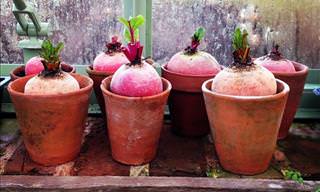
15 Vegetables You Can Grow in a Garden Pot!
If you would love to grow vegetables, but have a limited amount of space, then we have just the solution for you - vegetables you can grow in a pot.
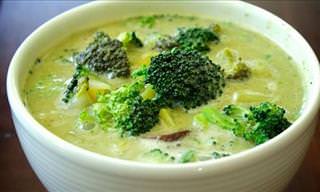
This Broccoli Soup Has Cancer-Fighting Properties
This creamy broccoli soup is not only delicious, but it also has cancer-fighting properties. Follow this recipe to learn how to make this tasty dish.

The KFC Secret Recipe Cat Is Out of the Bag - Here it Is
Colonel Sanders' nephew reveals the original secret recipe for Kentucky Fried Chicken.

Cooking Mistakes: Keep These Foods Out of the Microwave!
It may seem like a good idea to reheat the following foods in microwave, but doing so could actually be a health hazard. Read on to learn more.

10 Vegetables and Herbs To Buy Once and Re-Grow Forever...
Some parts of vegetables and herbs that you don't normally use and just throw away can actually be used to re-grow themselves time and again. Find out more.
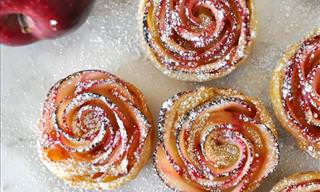
Make a Delicious and Unexpected Dessert: Apple Blossoms!
It's time to impress your guests with a dessert that isn't just sweet and delicious, but also stunning to look at!

This Cauliflower Casserole is Comfort Food at its Best
Learn how to make your next favorite casserole recipe, using cauliflower and cheese.
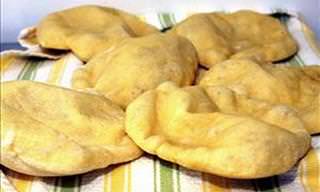
How to Create the Perfect Home Pita Bread
If you've never tried pita bread, then you're missing out! This simple pita bread recipe will make you wonder why you never tried this before!

Boost Your Immune Health With This Ayurvedic Drink
Check out this wonderful traditional Ayurvedic drink called kadha that is known to boost immunity and fight the cold.
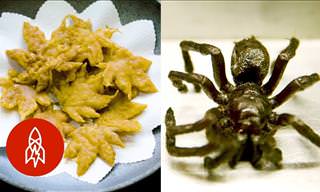 10:37
10:37
You Deep Fried WHAT? Weird Fried Foods and More
Have you ever tried fried maple leaves? Or a deep fried scorpion? Watch people prepare these weird meals and a few more traditional ones, too

11 Unexpected Health Benefits of Drinking Whisky
If you thought whisky was nothing more than an alcoholic drink, you were mistaken. This video will detail the various health benefits you can reap by drinking whisky in moderation.
 1:21
1:21
Surprise Everyone By Serving Them a Cake Inside an Egg!
No one will see this coming, these eggs contain little cakes...
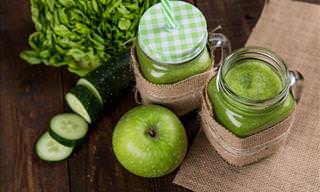
13 Delicious Juice Recipes to Detox Your Body With...
Follow this guide to learn how to make 13 delicious juices that'll help you detoxify your body.

3 Glasses of Sunshine: Drink Recipes for the Hot Weather
Spring and summer are on their way, so what better time than to start perfecting your drink making skills. These sunny juices will quench your gaping thirst.

This Has to Be the Most Guilt-Free Bread Recipe Ever!
This cloud bread is carb, gluten and sugar-free. Despite those facts, it's still light, fluffy and utterly mouthwatering. Learn how to bake it today.

13 Delicious Dishes You Can Make Using a Waffle Iron
I didn't think I could find so many ways to use a waffle iron to create delicious meals.

Impress Your Guests With This Easily Made Apple Swan!
A simple and easy way to beautify any set table with beautiful little apple swans!
 4:26
4:26
THIS is Why I Love Italian Cuisine!
What makes the Italian cuisine one of the best in the world? Watch and learn.

I Hope These Essential Kitchen Tips Make Your Life Easier
These tips will make you a master of your kitchen.
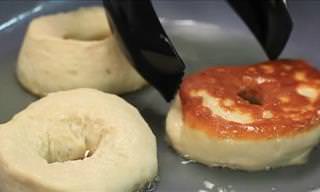
These Home-Made Doughnuts Need Only 2 Ingredients!
Here's a donuts recipe that anyone can succeed with. Master these 2 ingredient donuts and you'll be able to make any kind of donut you wish!
 6:07
6:07
These Quick Snacks Are Proven To Be Healthy and Cheap
A video from John Hopkins University shows us that healthy food doesn't have to be a burden on your bank account or your watch. These easy and affordable snacks can help keep you moving.
 4:58
4:58
The Long History of the World’s Oldest Hot Beverage
While tea was invented in China, it has spread to all corners of the world, becoming a staple everywhere it was introduced.
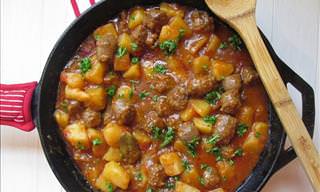
Cook a Traditional Czech Meal With These 5 Recipes
To enjoy the unique tastes of Czech cuisine, you no longer need to fly abroad. The following recipes will allow you to cook a traditional Czech meal yourself.
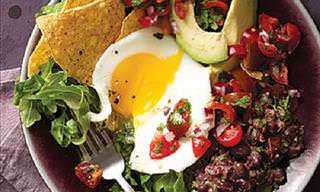
You've Got to Try these Delicious and Comforting Winter Salads
These hearty, comforting salads will take your mind off classic winter, comfort food.

A Guide to 7 Unique Tomato Varieties and How to Use Them
Whoa! I never knew there were so many different varieties of tomatoes out there.
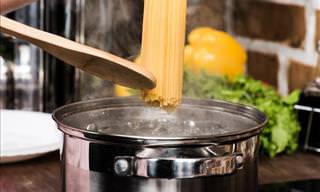
An Italian's Secret to Making the Best Pasta
Follow these tips to prepare an excellent plate of pasta.

8 Drinks That Help Burn Extra Fat Around Your Waistline
You may be surprised to discover that there are a number of drinks that can help you lose weight. Let's take a look at 8 of them.

5 Best Meal Planning Sites to Save Time, Money, and Energy
These meal preparation websites will help you cook a week’s food in advance.

Try This Easy Yet Heavenly Almond and Pastry Dessert Recipe
At a glance, the pastry may look complicated to make, but it is actually quite easy. Watch this video tutorial to learn how to make it.
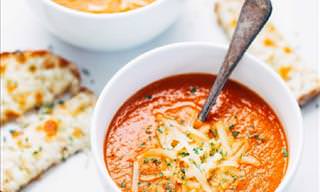
6 Delicious and Special Soup Recipes That’ll Warm Your Body
The cold winter days that stimulate the senses are perfect for trying these 6 simple, delicious, soul-warming soup recipes.
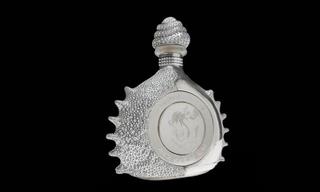
What Would You Pay For the Best Bottle of Scotch On Earth?
These incredible liquors are only available in small numbers and have been sold for extremely hefty prices exclusively for the elite

Surprise Your Sweetheart With a Valentine’s Day Breakfast
All of these recipes are simple in preparation, but very different in taste and food preferences. Find the perfect one for your special someone...


